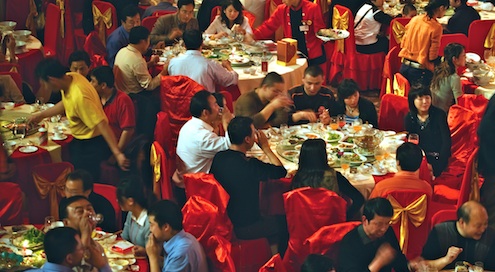
I was interviewed by Channel 4 News from the United Kingdom last week about Hong Kong’s wine auction market. We stood outside the debut auction by Spectrum, a US-based wine company breaking into the Hong Kong auction market. Nick Paton Walsh, the Asian correspondent for Channel 4 News asked me “Why are the Chinese so mad about wine?” I answered, “Which Chinese? Those living in Hong Kong, Taiwan, Singapore or from cities in mainland China?” Suddenly, he said, “Cut, cut. This is too complex an answer for my mother who is watching the news in England. Just answer for all Chinese and do not distinguish between Hong Kong or China.” Suddenly I represented, and was speaking for, about 20% of the world population.
Instead of heeding his advice, I gave the 5 minute rather than the 1 minute answer and explained that in Hong Kong, wine has been popular for a few decades but it was given a huge boost when the wine duty was eliminated in 2008.
In China, the growth in wine consumption is more recent and as a luxury product traded at auction, it has a much lower entry point than antiques, jewelry or art. It is not just wine that these newly minted millionaires are buying, it is also art, watches, cars and homes around the world. Relative to these other luxury purchases, wine is fairly inexpensive. I will see how much of my explanation makes the editor’s cut next week.
On a fairly regular basis, I am being asked to comment on the ‘Chinese market’ – from the consumer’s perspective, the producer’s perspective or the trade’s perspective. Rarely am I given the chance to go into detail about what I really think because frankly, the answer is complex and not at all simple. It is impossible to summarize in sound bites or even within five minutes an understanding of the social, cultural and economic trends surrounding wine consumption and sales.
When Jancis Robinson, fellow Master of Wine, was in town last year, she asked me very casually over a meal, “Why is Lafite so popular in China?” – another immensely popular question. I answered simply, “It is easier to pronounce than many other chateaux, it is a first growth with an impeccable track record and it’s expensive.” She repeated my rather simplistic explanation in one of her articles and I am embarrassed that I didn’t spend the time to explain fully why I thought Lafite was so popular. Had I know I was being interviewed, I would not have given such an obvious answer!
I believe Lafite’s popularity arises from a confluence of fortunate circumstances: French wines, especially Bordeaux reds are considered a ‘safe’ wine to order in China because of its historical presence in the market. Consider the French cognac and whiskey companies that were successful in China and Hong Kong in the 1980s. Remy was known for its cognac but branched out to wine, dabbling in Chinese wine production and building a wine portfolio with its own retail operations in Hong Kong. Lafite as a first growth became the wine of choice in the hushed corridors of the government offices as well as among the elite business circles during a time when wealth and interest in wine were growing in parallel. Lafite was in vogue at the right place at the right time. The trade began to realize that opinion leaders were creating a cult brand and they responded by not only buying as much Lafite as they could for the purpose of selling on, but a handful began to hoard the stock, calculating that prices will rise significantly. Suddenly Lafite and its second label, Carruade de Lafite, was in short supply and there seemed to be no end to demand.
It is difficult to replicate these fortuitous circumstances which is one reason why no other wine has yet to compete with the power of Lafite. The mainland market has opened up very quickly over the past ten years and it is challenging for just one prestigious brand to attract the kind of following that Lafite was able to garner when the market was less cluttered. However, the thirst for wine continues to grow and I am often asked: “Why are Chinese willing to pay so much for wine?” I reply with a question: “Have you looked at the prices for top Chinese tea lately?”
Reprinted with the permission of South China Morning Post









